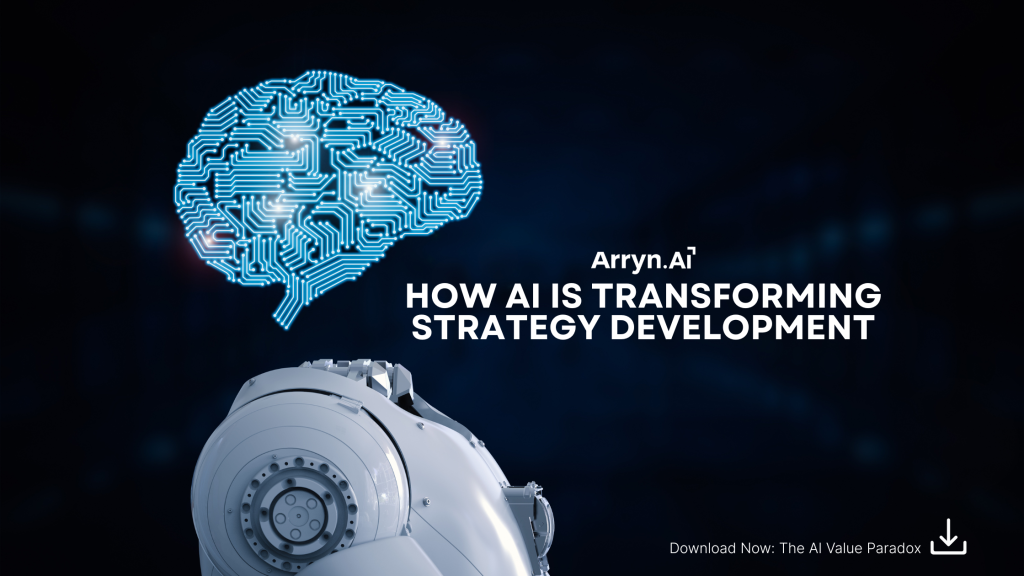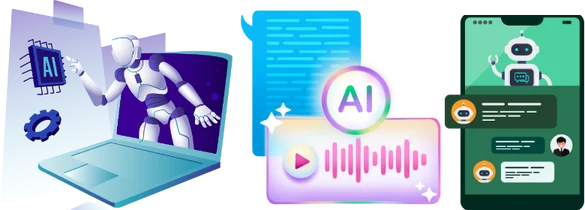Artificial Intelligence (AI) is reshaping how organizations design, test, and execute strategy. Once a domain defined by human intuition and experience, strategy development is now being accelerated—and in some cases, redefined—by intelligent systems that analyze vast data sets, simulate market dynamics, and generate insights in real time.
AI: From Analytics to Strategic Partner
For decades, data analytics supported strategic planning by providing descriptive insights. But today’s AI—especially generative AI (gen AI)—goes beyond analysis. It can synthesize unstructured data, model potential outcomes, and even recommend strategic moves.
McKinsey & Company calls this a new inflection point in strategy design—comparable to the emergence of core frameworks in the 1970s and 1980s. As AI adoption accelerates, strategists will need to complement human creativity with machine precision to develop bold yet evidence-backed strategies.
According to McKinsey’s 2024 State of AI Report, 72% of high-performing organizations already integrate AI into at least one business function, with 38% applying it directly to strategy and operations planning. This shift is redefining what it means to “think strategically.”
The Five Emerging Roles of AI in Strategy
Even in its early stages, AI is proving valuable across all phases of strategy development—from design to execution. Gartner and McKinsey identify five key roles AI can play:
- Researcher: AI can analyze millions of data points—news reports, patents, market filings—to uncover hidden opportunities. For instance, AI engines now screen over 40 million companies globally to identify M&A targets aligned with a firm’s strategic goals.
- Interpreter: AI turns complex analytics into business insights. Gen AI can interpret patterns across multiple inputs—such as customer reviews and competitor filings—to identify adjacencies for growth or early signals of market shifts.
- Thought Partner: By acting as a “challenger,” AI helps strategists pressure-test assumptions and mitigate cognitive bias. It can simulate alternative decisions and highlight overlooked risks or blind spots.
- Simulator: Scenario modeling powered by AI allows companies to test strategies against macroeconomic and competitive variables. AI simulation tools can quantify potential P&L outcomes, improving decision-making accuracy.
- Communicator: Gen AI simplifies strategic storytelling. It can craft narratives tailored to investors, regulators, or internal teams—helping ensure consistent communication across channels.
These roles are already being tested in real-world contexts. A Southeast Asian regional bank, for example, used AI-driven tools to analyze emerging financial trends and simulate market-entry strategies. The process led to a focused push into peer-to-peer payments and microcredit, validated by AI-based scenario analysis.
Key Considerations for Strategy Leaders
While AI’s potential is immense, it also introduces new strategic challenges:
- Proprietary Data Matters: As insights become more democratized, competitive advantage depends on exclusive data ecosystems. Companies using only generic data will produce generic strategies.
- Signal vs. Noise: With AI generating more data than ever, strategists must focus on identifying meaningful signals rather than getting lost in information overload.
- Human Judgment Still Reigns: AI can accelerate insight generation, but strategic synthesis and decision-making remain human strengths.
- Quality of Process Over Quantity of Data: McKinsey research shows that process discipline—testing alternatives, managing uncertainty, and removing bias—has 2x the impact on strategic success compared to data quality alone.
- Tech-Enabled Collaboration: Future strategy teams will merge business acumen with data science expertise, creating hybrid teams fluent in both AI tools and strategic reasoning.
Moving Forward: Building the AI-Ready Strategy Function
For organizations ready to evolve their strategy process, three immediate steps stand out:
- Invest in AI Literacy: Strategy leaders must understand how AI models generate insights—and how to interpret them responsibly.
- Experiment Now: Start using AI in research, scenario modeling, and competitor analysis. Pilot projects create fast learning loops and reveal capability gaps.
- Build a Proprietary Insights Ecosystem: Integrate external data with internal research, customer input, and market feedback to sustain a unique strategic edge.
As AI matures, it won’t replace human strategists—but it will augment them. Those who harness AI as both analyst and thought partner will be positioned to see patterns sooner, move faster, and act smarter.
References
- Gartner: 5 Practical Steps to Implement AI Techniques (2023)
- https://arryn.ai/about-us/
- https://arryn.ai/new/services/
- https://arryn.ai/case-study/
- https://arryn.ai/contact-us/
- https://arryn.ai/ai-whitepaper/
- https://www.mckinsey.com/capabilities/mckinsey-digital/our-insights/the-state-of-ai-in-2024
- https://www.gartner.com/en/newsroom/press-releases/2025-01-05-gartner-highlights-strategy-ai-integration
- https://hbr.org/2023/09/how-generative-ai-is-transforming-strategy
- https://sloanreview.mit.edu/article/how-ai-is-transforming-business-strategy/
- https://www.strategy-business.com/article/How-AI-Will-Change-Strategy






